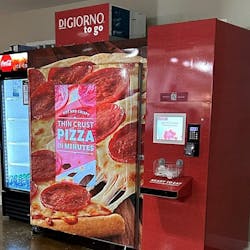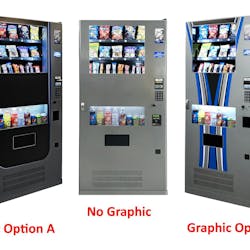Reportlinker.com announces that a new market research report is available in its catalogue:
Self-Service Markets: ATMs, Kiosks, Vending Machines
Report highlights include:
- The total installed combined base for self–service technologies including ATMs, self–service kiosks and vending machines is estimated at 28.2 million units in 2010 and is expected to reach 33.8 million units by 2015, growing at a compound annual growth rate (CAGR) of 3.7 percent from 2010 through 2015.
- Vending machines represent the largest segment in this market, accounting for more than 85 percent of all deployments to date. This sector was estimated at 24.4 million units in 2010 and is expected to increase at a 3.2 percent compound annual growth rate (CAGR) to reach 28.6 million units in 2015.
- In terms of growth, self–service kiosks are projected to experience the maximum growth in installations with a compound annual growth rate (CAGR) of 9.3 percent. This sector was estimated at 1.6 million units in 2010 and is expected to reach 2.5 million units in 2015.
This study pinpoints the structural and market forces that will shape the technologically–driven, self–service industry at a global level though 2015. Specifically, the report measures, forecasts and analyzes the global market for automated teller machines (ATMs), self–service kiosks and vending machines. It examines the impact of various trends that impact these dynamic markets. The information in this report:
- Provides an overview of the self–service industry, including the various factors and trends that affect the industry from the perspective of various stakeholders, including technology vendors, component suppliers, and customers.
- Contains global forecasts and market trend analyses for ATMs, self–service kiosks and vending machines. It does not cover self–checkout systems used in the retail environment.
- Identifies and evaluates the impact of economic, technological, legal/regulatory, and other factors that will drive the future market for each of these new technologies.
- Analyzes market trends, citing data for 2010, and 5–year forecasts, including 5–year compound annual growth rates (CAGRs) through 2015.
- Considers the market by geography, that is, North America, Europe, the Middle East and Africa (EMEA), Asia–Pacific (including Australia, Japan, and New Zealand), and Latin/South America (including Mexico), as well as by product segments. This report also contains qualitative pricing and technology analyses.
BCC Research commissioned this study to provide a comprehensive analysis of emerging and existing self–service technologies. This is an update of BCC Research report IFT047A, published in May 2006.
The main goal of this study is to provide the reader with an understanding of developments in the self–service technologies market that would influence the future size and structure of the industry. It is also intended to satisfy the need for an objective, quantitative analysis of the self–service market and identifies the key segments and technologies that show the greatest potential between 2011 and 2015 and also projects the future demand for the different technologies while evaluating the challenges that must be overcome for the market to realize its full potential.
In the current economic climate, retailers, bankers, airline companies and technology vendors are facing unprecedented fiscal pressures, and this report explores a range of self–service technologies that they can use to maintain a competitive advantage and improve customer satisfaction.
This report addresses the global market for self–service technologies and covers the following segments:
- ATMs
- Self–service kiosks
- Vending machines
The study is organized around the following major topics for each of the technologies:
- Executive summary
- Overview
- Industry challenges and concerns
- Industry regulations and compliances
- Market forces: drivers and impediments (factors that will influence the long–term development of the market)
- Technology analysis
- Pricing analysis
- Geographic analysis and market sizes by geography and products
- Industry structure and market shares
- Company profiles.
Self–checkout systems are excluded from this research.
The geographical scope of this report is the global market.
This report is an exhaustive study of self–service technologies with crucial statistics and analyses of the market structure, market size, vertical segments, emerging and existing trends and technologies, major opportunities, and market shares of key players.
This report has been written for the entire retail community, including the following:
- Technology vendors, distributors, and component suppliers.
- System integrators, resellers, consultants, retailers, bankers and other stakeholders involved in the self–service industry.
- Financial institutions such as investment banks and venture capitalists.
- Analyst communities.
Both primary and secondary research methodologies were used in preparing this study. The findings and conclusions of this report are based on information gathered from technology vendors, retailers, customers, and integrators. The information obtained through primary interviews was compiled and analyzed with the information obtained through an extensive review of secondary sources. Secondary sources include books, newspapers, trade journals and publications, white papers, industry portals, company literature, trade associations, industry news and developments, and online databases. Information for our company profiles was primarily obtained from the companies themselves, especially the larger, publicly owned firms.
The base year of the report is 2010, with forecast data provided through 2015. Historical, base year, and forecast data are provided for each market segment of this report. Growth rates are determined through a compilation of data, including past trends, future trends, and market forces, such as market drivers and restraints and their impact, product acceptability, and replacement rate. All dollar projections presented in this report are in 2010 constant dollars




